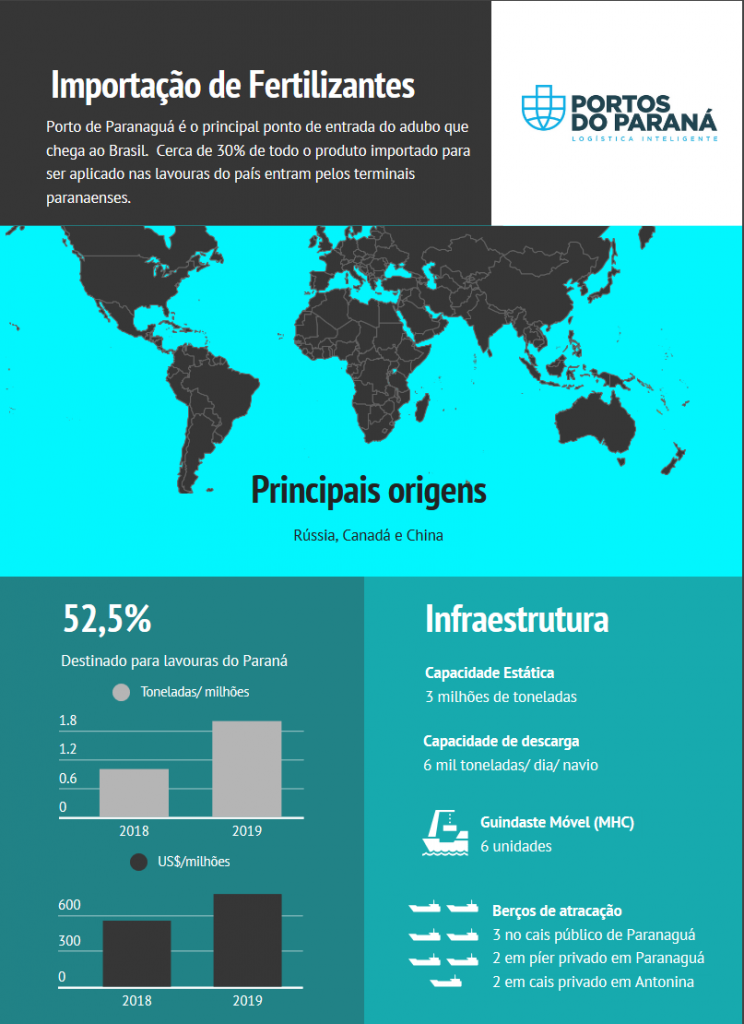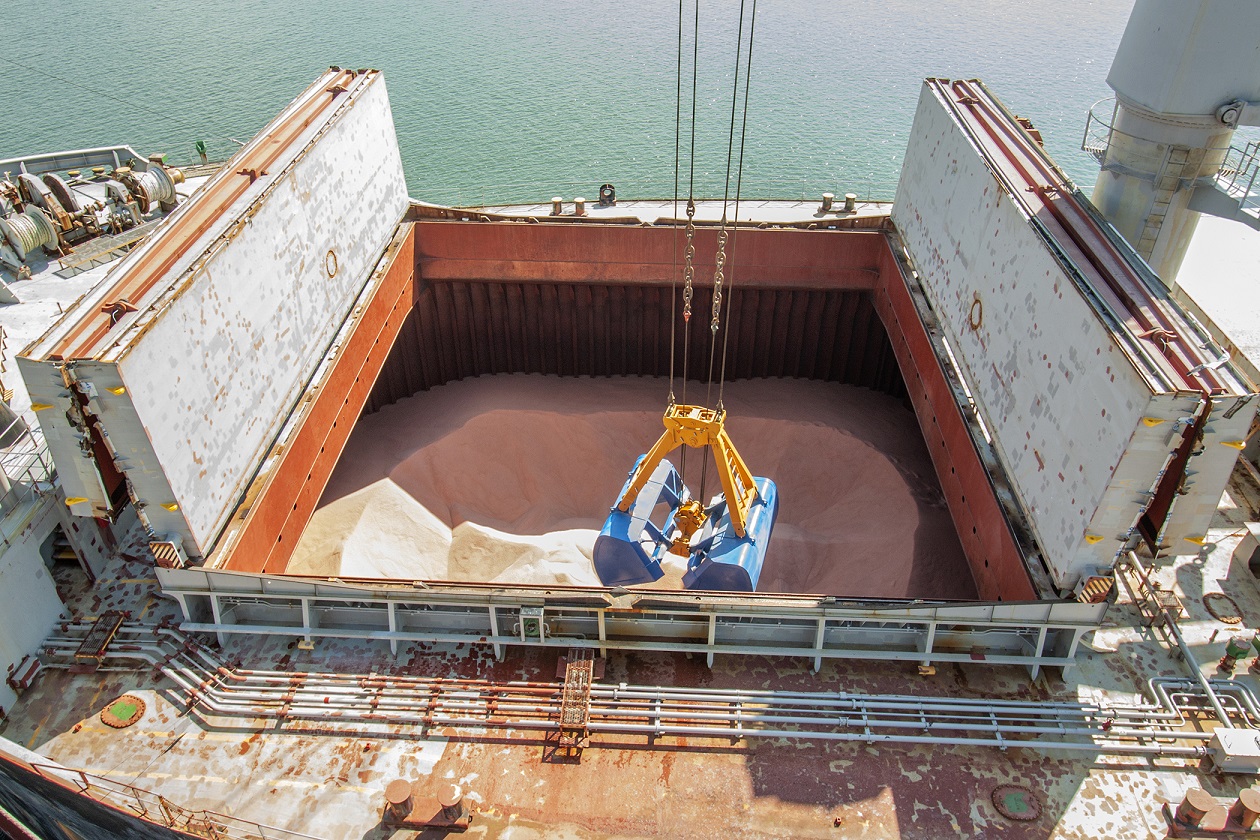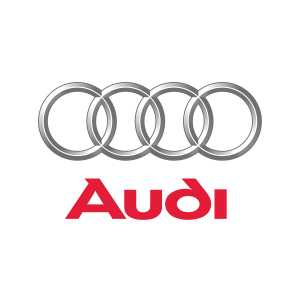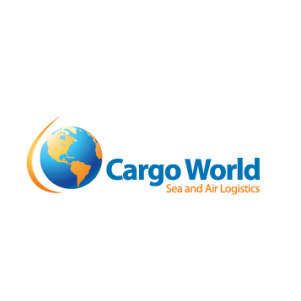Imports of fertilizers landed by the Ports of Parana totaled US $ 1.48 billion, from January to July, 2019. The value, according to the Ministry of Economy, Industry, Foreign Trade and Services, is 34% higher than in the same. 2018, when it was $ 1.1 billion.
The numbers confirm the port of Paranaguá as the main point of entry of fertilizer that arrives in Brazil. About 30% of all the product that arrives to be applied in the country’s crops comes through the Paraná terminals. In addition to serving producers in Paraná, the fertilizer is intended for the states of Mato Grosso, Mato Grosso do Sul, Goiás, Sao Paulo and Minas Gerais.
Considering only the products destined to the Paraná crop, in the last seven months, they were 2.49 million tons, totaling US $ 770 million. “The Port of Paranaguá has the best average operating productivity for the landing of products between Brazilian ports, totaling 299 tons per hour,” says the CEO of the public company Portos do Paraná, Luiz Fernando Garcia.
According to the Union of Agricultural Fertilizers and Correctives Industry in the State of Paraná (Sindiadubo), the choice of ports in Parana consider infrastructure, good management and the qualification of the workforce. “In the past, there was a storage problem and the delay in unloading made every operation more expensive. Increasing overall efficiency, from the mooring of the ship to transportation to the destination, it was possible to reduce costs, ”explains President José Carlos de Godoi.
ORGANIZATION – In the public dock of the Port of Paranaguá are three preferred berths for ships loaded with fertilizer. One of these, the 209, has the availability of conveyor belts that carry the product to the Public Fertilizer Terminal (TEFER, which can store up to 20,000 tons), which in turn has interconnection with other private warehouses.
In addition to these priority berths, fertilizer ships can dock and unload cargo at any other unoccupied public berth berth. Paranaguá Port also has a private pier, with two exclusive berths. In Port of Antonina are two other cradles for the product.
MANAGEMENT – The rules for the docking and landing of fertilizers in the Ports of Paraná are clear, transparent and well defined. There are two work orders governing these operations: OS 006 and 145 of 2018.
“The minimum productivity required per day per ship unloading is six thousand tons. If the ship does not meet this minimum, it must untie and give up space to another vessel. However, we have even doubled this amount ”, comments the Director of Port Operations of Paraná, Luiz Teixeira da Silva Junior.
Twice a week, meetings are held to schedule operations. With the participation of port operators in the segment, maritime agencies, importers, transporters and other representatives of the chain, these meetings analyze the plans for the distribution of cargo from ships to warehouses.
“The payment of fees to the port authority, the release of the cargo by the IRS, and the other documentation required for the product to be unloaded are checked. Our concern is to ensure flow flow and discharge productivity ”, points out the Director of Operations.
EQUIPMENT – There are six MHCs (mobile port cranes) that unload the products. Trucks that access the dock to pick up fertilizer have three gates with four weighing platforms each (two in and two out). The platforms are 30 meters long and 3.20 meters wide.
“This structure of the gates ensures safety and agility for the entry of trucks that access the primary range to pick up the product. Scales are automated and system information (about vehicles and drivers) is interconnected with the entire system. The trucks take less than a minute to leave ”, explains Teixeira.
The operation also requires skilled labor. They are lecturers, ushers, dockers and lookouts.

Source: Portos do Paraná







